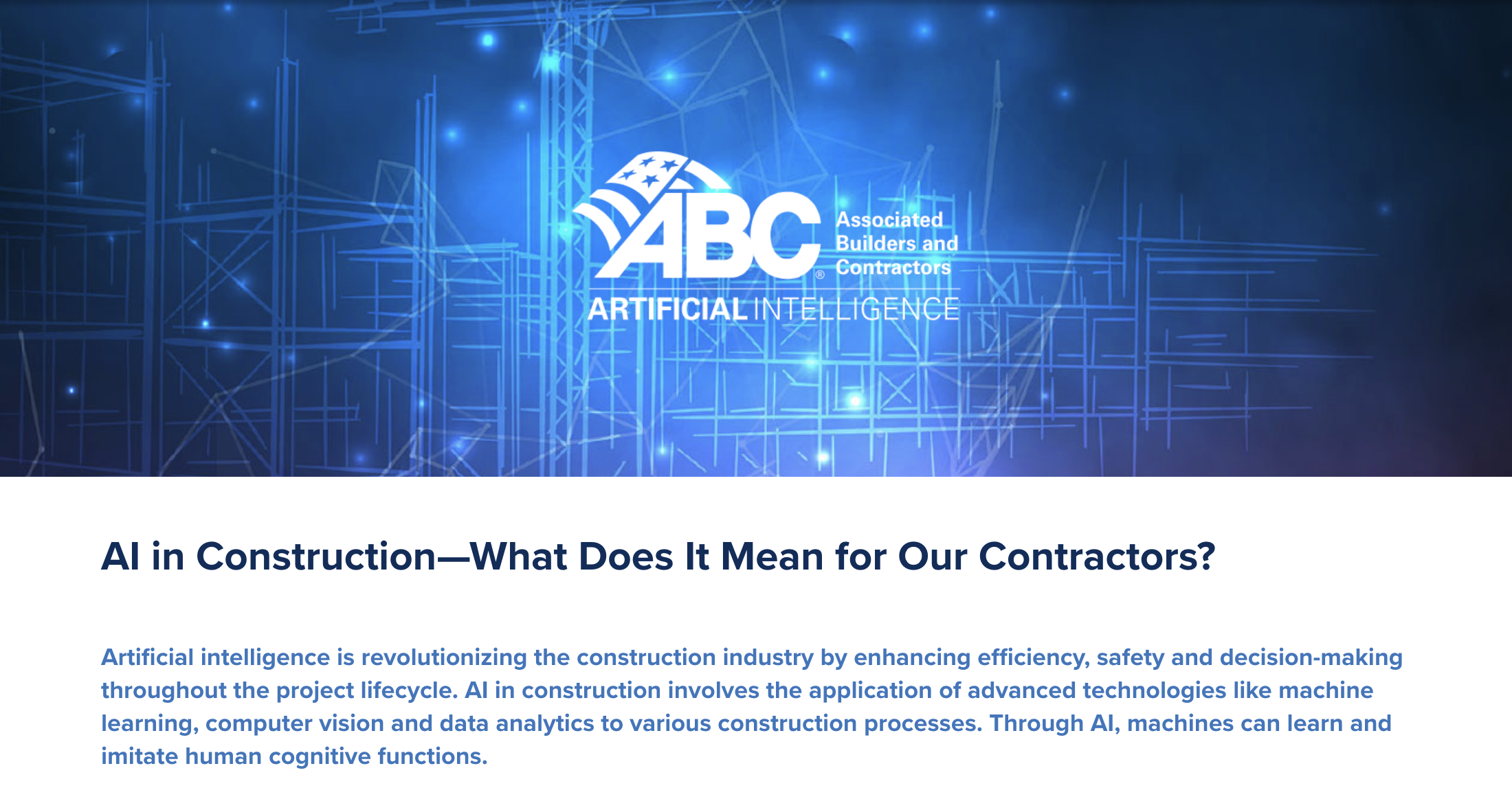Associated Builders and Contractors has published a guide on artificial intelligence (AI) technology for the U.S. construction sector. The guide, titled AI in Construction — What Does It Mean for Our Contractors?, delves into definitions, practical applications in construction, and key factors to consider when integrating AI into construction processes.
The primary objective of this guide is to equip contractors with the necessary knowledge to engage effectively in discussions surrounding AI in construction. By offering insights into AI’s role across various stages of the construction project lifecycle—ranging from preconstruction to building maintenance—the guide aims to foster a deeper understanding of AI concepts and their implications within the industry.
Within the guide, Associated Builders and Contractors elaborate on the diverse applications of AI technology in construction, such as predictive analytics, supply chain management, contract review, computer vision for intelligent site monitoring, energy management, and predictive maintenance. These applications are designed to enhance project efficiency, safety protocols, cost optimization, and overall project delivery.
Patrick Scarpati, the Director of Construction Technology and Innovation at ABC, emphasizes the importance of embracing AI technology to drive advancements in project delivery and achieve critical objectives like upskilling, workforce development, knowledge transfer, and supply chain optimization. Scarpati underscores the transformative potential of AI in revolutionizing safety protocols, design and planning processes, and various operational aspects within the construction industry.
The guide outlines over 20 distinct use cases where AI can significantly impact project management practices across preconstruction, construction, and building maintenance phases. These include leveraging predictive analytics for scheduling optimization, utilizing AI in supply chain management to streamline procurement processes, enhancing contract review procedures, implementing computer vision for site monitoring, optimizing energy consumption through data analysis, and enabling predictive maintenance through building automation systems.
ABC emphasizes that the guide serves as a foundational resource for individuals seeking to comprehend the implications of AI within the construction landscape. By familiarizing readers with key definitions, practical use cases, and strategic considerations related to AI adoption, the guide aims to empower industry professionals to actively engage in dialogues concerning the integration of AI technologies in construction practices.









